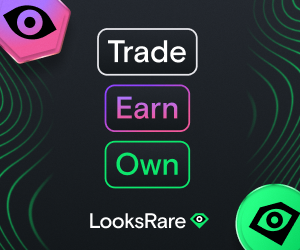What is SUI Blockchain? The Ultimate Guide
Sui blockchain is a first-of-its-kind Layer 1 blockchain and smart contract platform designed to make digital asset ownership fast, private, secure, and accessible to everyone.

Sui is redefining blockchain technology with its groundbreaking Layer 1 platform.
The native token of Sui is referred to as SUI. SUI token is named in such a way as to differentiate it from the Sui platform.
Mysten Labs, the original contributor to Sui, now SUi foundation, was founded by by former executives/lead architects of Meta’s Novi Research (the team responsible for Diem blockchain and Move programming language): Evan Cheng; Adeniyi Abiodun; Sam Blackshear; George Danezis; Kostas Chalkias. They raised more than $300 million from major venture capitalists including a16z, Circle, Binance Labs, and Lightspeed Venture Partners.
What is SUI blockchain?
Designed to ensure fast, secure, and private digital asset ownership, Sui ecosystem is accessible to everyone. Powered by the Move programming language and an innovative object-centric model, Sui enables parallel execution, achieves sub-second finality, and supports rich on-chain assets on it's blockchain network. With scalable processing and storage capabilities, Sui empowers creators and developers to build extraordinary, user-friendly experiences via smart contracts.
How does SUI blockchain works?
Sui's architecture tackles common pain points found in first-generation blockchains through its innovative features like horizontal scaling, transaction speed, composability, sparse replay, and on-chain storage. It offers elegant solutions to enhance efficiency, scalability, and usability, revolutionizing the blockchain landscape.
Horizontal Scaling
On the Sui network, every group of transactions is processed in parallel, eliminating the bottlenecking that occurs in earlier blockchains. This advancement in parallel transaction execution stems from distinguishing between various objects, resources, accounts, and other components. By doing so, the Sui network ensures optimal efficiency and avoids potential limitations.
Composability
In Sui, unlike most other blockchains, one can directly pass an asset (such as an NFT), directly into a function argument. Sui’s object-centric approach also allows for more esoteric data structures, and the ability to store assets inside such data structures, or in an asset itself.
Sparse Replay
A blockchain naturally keeps a record of all transactions, ensuring transparency. Taking the example of game builders, they can easily focus on relevant dApp interactions without the need for exhaustive querying of on-chain data. This way, products on Sui can effortlessly track the evolution of game objects, eliminating the hassle of delving into the depths of the Merkle tree.
On-Chain Storage
Assets stored on the Sui blockchain exist as objects, bypassing the need for Merkle tree indexing. This direct on-chain storage method, in conjunction with conventional approaches like IPFS, efficiently addresses scalability concerns. Uploading assets directly on-chain proves to be great for low cost updates. (source: https://docs.sui.io/)
SUI blockchain key features
High performance
Sui stands out for its unparalleled performance, offering a host of advantages over traditional blockchains. Let's delve into the key performance benefits of Sui:
1. Causally ordering transactions: Unlike other blockchains that always enforce total order, Sui forgoes this for many transactions. By allowing causal ordering, Sui leverages massive parallelization, reducing latency and empowering validators to fully utilize their CPU cores.
2. Edge-centric approach: Sui strategically shifts complexity to the edges of the network, involving the client in various protocol steps. This minimizes interactions between validators, resulting in simpler and more efficient code. Furthermore, Sui facilitates offloading a significant portion of the client's workload to a Sui Gateway service, ensuring an enhanced user experience. In contrast, traditional blockchains rely on a fire-and-forget model where clients monitor the blockchain state to assess high speed transaction success with low gas fees.
3. Network-speed operations: Sui operates at blazing network speed, eliminating the need to wait for system timeouts between protocol steps. This substantial reduction in latency is particularly noticeable when the network is stable and not under attack. Conversely, several traditional blockchains, including most proof-of-work based ones, must adhere to predefined timeouts before committing transactions for security purposes.
4. Scalability through multiple machines: Sui capitalizes on the ability to leverage multiple machines per validator to boost performance. In contrast, traditional blockchains are often designed to run on a single machine per validator, sometimes limiting scalability to a single CPU.
Embracing these performance-enhancing features, Sui sets a new standard in blockchain technology, delivering exceptional speed, efficiency, and scalability.
Performance under faults
Sui utilizes a leaderless protocol to process simple transactions that solely involve owned objects. This approach ensures that any faulty validators have minimal impact on performance. For transactions involving shared objects, Sui employs a cutting-edge consensus protocol that eliminates the need for a view-change sub-protocol. As a result, only slight performance degradations occur. In stark contrast, most leader-based blockchains experience a significant decline in throughput and an increase in latency even with just one validator crash, often by more than tenfold.
Security assumptions
Unlike many traditional blockchains, Sui does not rely on strong network synchrony assumptions. As a result, Sui is capable of maintaining its security properties even under unfavorable network conditions, including severe disruptions, network splits, and targeted DoS attacks on validators. In contrast, synchronous blockchains, such as most proof-of-work based blockchains, are susceptible to prolonged network attacks that can result in resource double-spending and deadlocks.
Efficient local read operations
The process of reading in Sui blockchain stands out significantly from other blockchains. Rather than retrieving a large amount of data, Sui allows users to retrieve specific objects and their histories with low latency and granularity. Starting from the genesis, Sui creates a focused family tree of objects, enabling users to only read objects related to the transaction sender. For those needing a comprehensive view of the system (such as for auditing purposes), checkpoints can be utilized to enhance performance.
In contrast, traditional blockchains require family ordering to completely sequence transactions, leading to the need for querying a massive blob of data to extract precise information. This can result in disk I/O becoming a potential performance bottleneck.
Easier developer experience
Developers can leverage Sui to unlock a plethora of benefits:
- Sui's Move and object-centric data model empowers the creation of composable objects and NFTs via it's smart contract platform
- Embrace an asset-centric programming model and programmable objects
- Elevate your developer experience with streamlined ease
Official Sui blog: https://blog.sui.io/
Official Sui website: sui.io https://sui.io/











